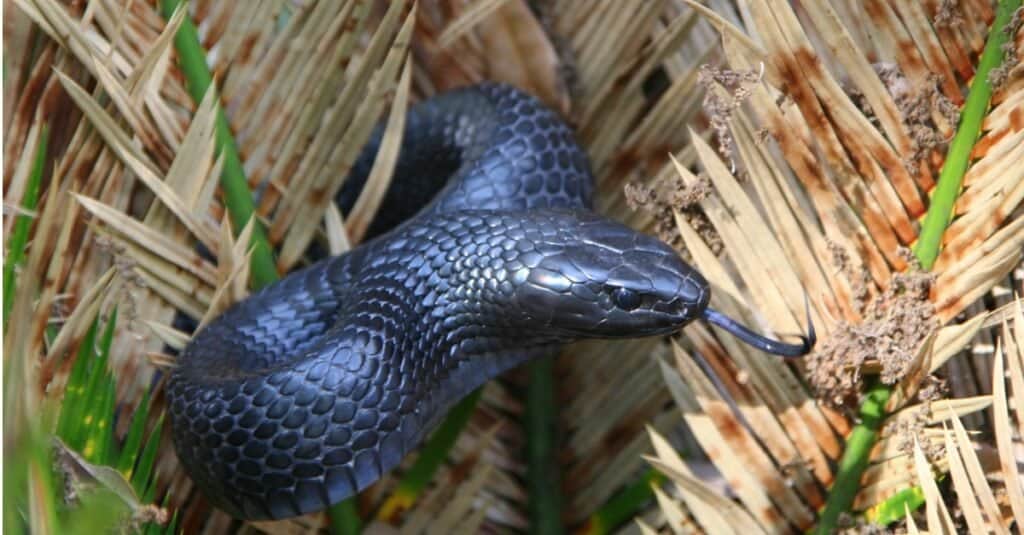Introduction
Tiger serpents are among the most popular and feared reptiles in Australia, widely identified for their striking appearance and powerful poison. This post golden-crowned snake aims to explore the intricacies of the tiger serpent's habitat, circulation, habits, and what one can expect when running into these fascinating animals. By recognizing where to locate them and just how to navigate possible risks, you can value their role in the ecological community while guaranteeing your safety.
Tiger Snake Environment: Where to Locate Them and What to Expect
Tiger serpents are primarily discovered in southeastern Australia, consisting of Tasmania, where they flourish in a selection of environments. Their flexibility permits them to inhabit diverse terrains such as coastal regions, marshes, meadows, and also metropolitan areas.
Geographical Distribution of Tiger Snakes
The geographical reach of tiger snakes extends throughout numerous Australian states. They are particularly common in:
- Tasmania: The Tasmanian tiger serpent is one of the most identified subspecies. Victoria: Found near water bodies like rivers and lakes. New South Wales: Liking bushland locations near to water sources. Western Australia: More frequently seen around swamps and estuaries.
Understanding the geographical circulation is crucial Checkered keelback for both conservation initiatives and Venom toxicity Australian snakes public understanding pertaining to encounters with these snakes.
Preferred Habitats of Tiger Snakes
Tiger snakes flourish in various habitats. Below are some common atmospheres where they might be located:
Wetlands: They favor marshy or boggy locations where they can access prey easily. Coastal Regions: Near beaches or rough shorelines give plentiful food resources like fish and amphibians. Forested Areas: Dense undergrowth provides shelter from predators while offering hunting grounds.Behavioral Patterns Associated with Habitat
Understanding tiger snake habits within their habitats is vital for communication administration:
- Nocturnal Activity: Tiger serpents tend to be much more energetic during golden hours (sundown and dawn), making them more difficult to find during daytime. Territorial Nature: They show territorial behavior; hence, it's paramount to appreciate their space if encountered.
This understanding can aid minimize undesirable interactions in between humans and tiger snakes.
Are Tiger Snakes Venomous?
Yes, tiger snakes are certainly poisonous. Their poison includes neurotoxins that can trigger paralysis or even fatality if untreated.
What Makes Their Poison Dangerous?
The strength of a tiger serpent's poison varies depending on numerous elements:
- Geographic location Individual health Quantity injected during a bite
Symptoms of a Tiger Snake Bite
Recognizing symptoms early is vital:
- Pain at the bite site Swelling Difficulty breathing
Immediate clinical interest is necessary if bitten.

First Help for Serpent Bites
Knowing first aid treatments can be lifesaving in case of a serpent bite.

First Help Tips for Serpent Bites
Stay calmness; maintain the affected area still. Call emergency situation solutions immediately. Apply a pressure bandage over the bite site. Keep the specific lying down till help arrives.Following these actions can significantly boost end results following a serpent encounter.
Where Else Can You Encounter Tiger Snakes?
While they're often discovered in their all-natural habitats, urbanization has brought about enhanced experiences with humans.
Urban Encounters
Tiger serpents might venture into yards or parks searching for food or water sources.
Precautions When Treking or Exploring
When discovering locations known for tiger snake environments:
- Wear thick boots Stay on paths Be vigilant
Taking these preventative measures will aid lessen dangers while you delight in nature.
Baby Tiger Snakes: A Special Point Of View on Growth
Just like adults, baby tiger serpents are born poisonous yet smaller sized in dimension.
Characteristics of Baby Tiger Snakes
- Size: Commonly around 20-- 30 centimeters when born. Appearance: Sporting activity similar coloration as grownups yet may have lighter bands initially.
Understanding their advancement helps in valuing their ecological role from early stage onward.
FAQs about Tiger Snakes
1. Are all tiger snakes venomous?
Yes, all types of tiger snakes have poison with the ability of causing severe harm.
2. Just how can I determine a tiger snake?
Look for distinctive banding patterns varying from yellowish-brown to blackish shades along their bodies; adults usually expand between 1-- 2 meters long.
3. What must I do if attacked by a tiger snake?
Seek prompt medical interest; apply first aid actions as talked about earlier while maintaining calm.
4. Do baby tiger snakes position any kind of danger?
Absolutely! Despite their small size, child tiger serpents are still venomous and can deliver attacks that call for significant clinical attention.
5. Are there any kind of details environments I should avoid?
Avoid going through dense underbrush or near stationary water where conditions favor serpent existence throughout warmer months.
6. How do conservation efforts affect tiger serpent populations?
Conservation efforts focus on habitat conservation which straight affects populace stability by making certain adequate food sources and risk-free breeding locations.
Conclusion
In recap, recognizing "Tiger Snake Environment: Where to Discover Them and What to Anticipate" not only enhances our knowledge concerning these impressive reptiles yet additionally boosts our capability to exist together safely with them in shared atmospheres. From acknowledging their liked habitats to recognizing exactly how to respond properly if bitten, comprehensive expertise encourages all of us-- whether we're wild animals lovers or informal walkers-- to appreciate this interesting element of Australia's natural heritage while prioritizing our safety.
This post functions as an extensive guide on whatever pertaining to tiger snake habitats! Whether you're a serious traveler or somebody looking simply for details concerning these animals, understanding how they communicate within their ecological communities-- and exactly how we fit into that photo-- is crucial!
